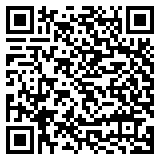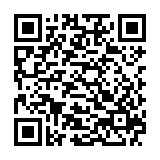Relay interpreting, or indirect interpreting, is one of the many forms of interpreting services. Its seamless execution disguises its use, particularly in large conferences.
When relay interpreting is used, an interpreter listens to the speaker and translates the message into a language known by the rest of the interpreting team. They then interpret the message they received into the language spoken by each target group.
When Is Relay Interpreting Used?
Typically, multiple languages are spoken by different conference attendees. Often, the major languages spoken are English, Mandarin, Spanish, French, and German. This seems straightforward. However, in some conferences, there will be participants who speak rare languages. Sometimes, there are no interpreters available for a specific language pair. In these two scenarios, relay interpreting is often used.
For example, the working languages in a conference held in the United States are Portuguese, Mandarin, and English. It is hard to find a Mandarin to Portuguese interpreter in the U.S. But there would always be English to Portuguese and English to Mandarin interpreters. Thus, the two interpreters could establish a relay team.
Once the Mandarin speaker starts to talk, the Mandarin-English interpreter will render the message in English for the conference delegates who speak the language. The second interpreter listens to the Mandarin-English interpreter instead of the speaker who speaks in Mandarin. He or she listens to the English interpretation and renders it into Portuguese for the Portuguese-speaking delegates. The entire process is done simultaneously.
If you base it on the description, relay interpreting looks like a simple process. But in reality, the procedure is complex. Its successful execution relies on excellent synchronization. Likewise, relay interpreting has its own set of challenges, particularly in setting up the required equipment for simultaneous relay interpreting, including audio equipment.
Types Of Relay Interpreting
When you say indirect interpreting, the first thing that comes to mind is simultaneous interpreting. However, it can also be done through consecutive relay interpreting. The example mentioned earlier (Mandarin to English to Portuguese) is simultaneous.
Here is an example. A visitor from Thailand is hospitalized in Madrid. The patient does not speak Spanish. But an interpreting service is available. So the doctor can comfortably speak in Spanish which will simultaneously be rendered into English. The English to Thai interpreter then renders the statement in Thai for the patient. The patient can respond in Thai, which will be rendered into English before it is rendered into Spanish.
Many conference organizers now see the value of relay interpreting when they are requested to find interpreters in many languages.
Relay Interpreting and Its Applications
To further explain the process of relay interpreting, it means that a proxy language is used when the direct interpreters between two languages are not available. If the working languages for a conference, for example, are Arabic, German and English and the event organizer cannot find an Arabic-German interpreter, the recourse is to book the services of Arabic-English interpreter and a German-English interpreter. You can see that the common language is English, which in relay interpreting, is called the pivot language.
Relay interpreting can be applied to large conferences where multiple languages are involved, such as UN conferences, but it can also be used in smaller meetings when there are no available direct interpreters for the working languages.
The process can be used for sign language interpreting as well. For example, in the United States, American Sign Language (ASL) is used. If a deaf person from a foreign country does not know ASL, he or she can use home signs or informal sign language. The deaf interpreter then interprets this into ASL, which in turn is rendered into English by an interpreter with normal hearing.
It requires additional equipment. In simultaneous conference interpretations, the usual interpreting setup consists of a microphone, headset, and transmitter for the interpreters who are housed inside interpreters’ booths. Headsets and receivers are provided for the conference attendees. In relay interpreting, an interpretation console is needed. The console should be able to receive transmissions from the other interpreters as well as send transmissions to other receivers.
Finding the Best Interpreting Services for Your Needs
Worry about the other aspects of your event and leave the interpreting in the hands of the expert interpreters of Day Interpreting. We are a professional language service company that offers interpretation services and have the right technical equipment for meetings and conferences worldwide. Our team only works with highly skilled and experienced interpreters who always deliver accurate work. You can easily connect with us, as we are open 24/7, 365 days of the year!





0 Comments